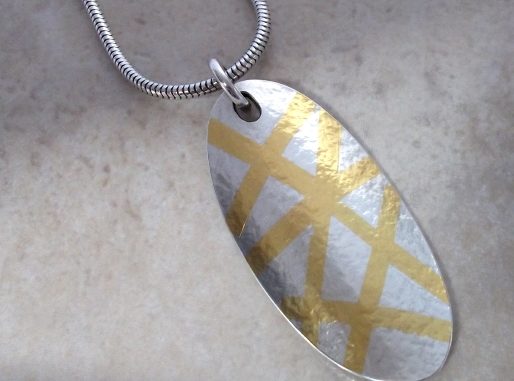
Keum boo, also known as Kum-boo and or Kum-bu, and pronounced as “Come-boo”, means ‘attached gold” in Korea. It involves applying a 24k gold to the surface of silver, and is a popular part of Korean culture. While Keum boo originated in Korea, it is quite popular in Japan and China as well, and has been so for centuries. Indeed, there is a plenty of evidence to suggest that a variation of this technique was used by the Greek and Roman civilizations.
Keum boo can be used to apply a 24k gold foil to 22k or 18k gold as well, apart from just silver, and also to other gold alloys such as palladium, platinum and white gold. It is possible to create the most beautiful and intricately designed jewelry with Keum boo.
The Technique of Keum boo
There are quite a few Keum boo techniques. You may take a finished product made in sterling, repeatedly heat it and quench in water to bring up the fine silver, till it is perfectly white. Once this is done, heat it again on a hot plate over a flame. The trick here is to heat evenly and consistently. Then, place a thin gold foil on the product, with the help of a polished steel burnisher to press it over the surface. The idea is to do this really carefully to make sure that the gold foil is in place permanently.
Another Keum boo technique involves the use of a pair of burnishers, a steel bench block and the application of great heat. Burnishers are special tools used by jewelers to work with precious metals. Steel bench blocks are excellent cooling devices.
A Hot Plate is Best For The Keum-Boo Technique
The idea is to take a hot plate on which you wish the gold foil or gold leaf to be applied, heat it up to 650 degrees to 850 degrees (Fahrenheit), which is very hot indeed, enough to blacken a wooded chopstick that comes in contact with the plate.
Once a very high temperature has been reached, grab the gold leaf with tweezers, get a burnisher and slowly but sure, press the gold leaf into place.
While doing so, your burnishers are likely to get really quite hot. Then pick out cooler burnishers. This is important because by using extremely hot burnishers, you risk damaging the gold leaf.
Use a Steel Block To Cool The Piece Down
So, once you get the gold leaf in position, place the metal onto the steel bench block, and allow it to cool down. The steel bench block absorbs all the heat, without breaking the gold leaf or damaging the plate. Similarly, the gold leaf may also be applied to various intricately designed jewelry.
The most popular Keum boo technique used in Korean is to apply gold patterns on gold sheet metals, which are then rolled for future use in fabrication projects. The gold (or silver) is beaten down into an extremely thin layer and heated to a very high temperature, till the gold diffuses and gets absorbed by the silver product that it is applied on.
Small bubbles may appear during the application of this technique, which you should flatten with a burnisher or even with a fingernail. Better use a burnisher to avoid the risk of injury, especially if the bubbles are large. Continue to burnish the metal till the gold foil is in place in a consistent pattern.
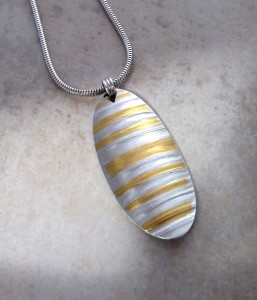
You should roll the gold leaf with a piece of glassine paper or metal, and increase the rolling pressure on it, till it’s very thin – up to 0.001 mm in thickness. Keum boo works best when the gold leafing is really quite thin – when too thick, it never quite works out fine.
The thin gold leaf should then be applied evenly to white gold, palladium, platinum and various other gold alloys. Keum boo adds a fabulous color and patterns to the gold jewelry that is made from this.
Can you teach yourself Keum boo?
Keum boo is quite an easy technique to practice and you can easily do it at home. But it does help to join a short training course on the technique conducted by experts. Normally a Keum boo course takes no more than a couple of weeks. Keum boo can be done easily at home, but you’ll need to equip yourself with certain basic tools such as the burnisher, glassine papers for holding the gold leaf and a coolant such as a steel bench block.

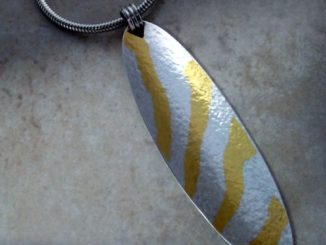
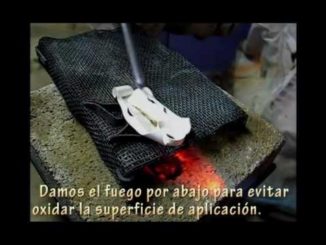
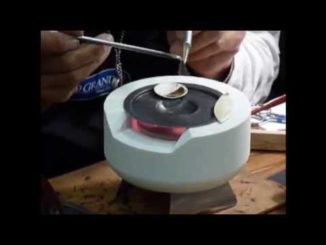
Be the first to comment